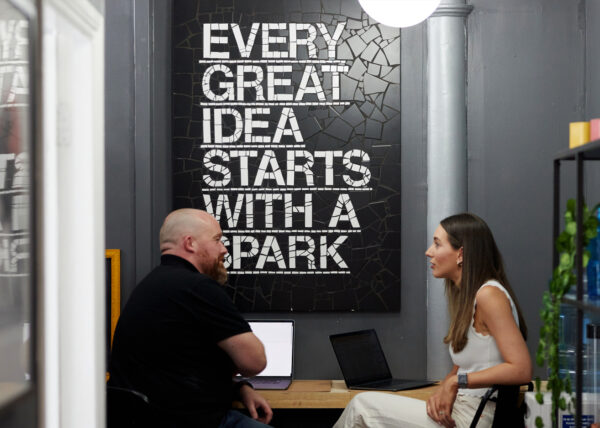
Music, Design & Digital
Music and design have crossed paths a lot in recent history, and I mean a lot. The first thing that springs to mind is, of course, album artwork: Andy Warhol and The Velvet Underground, Jamie Reid and the Sex Pistols, Peter Saville and Joy Division (and later New Order) just to name a few.

Due to artistic nature, it’s no surprise that collabs (as the kids would say) occur, but sometimes, lines become blurred and designers become musicians and vice versa. Scott Hansen is a great example; a San Fransisco based ambient musician and producer (Tycho) and artist/designer (ISO50). In Hansen’s 10-year design career, he freelanced at loads of design agencies, including a stint at Adobe. Now, he focuses his time on music and personal design projects, including artwork for the Tycho musical persona – woah.
There’s also the French based Electronic outfit, Justice. The Grammy Award winning band (ooh la la), best known for their song “We Are Your Friends”, started out as designers. Recently asked in a Pitchfork interview about their design background they said: “We didn’t have time to wonder if it was bizarre or not, we just noticed one day that we were not graphic designers anymore—we were making music.” Kanye West, aka Yeezy, is another. When asked how he would describe himself by Rolling Stone in 2006 he replied, “a designer’.
We’ll leave you to ponder that one.

Recently, the relationship between design and music has gone through some major changes. As music has moved into the digital age, physical albums sales have dropped due to downloading. Streaming came next, with models like Spotify, that pays musicians based on the amount of plays rather than records sold, has changed the way we listen to our music everyday.
Now, don’t get me wrong, there has been a resurgence in listeners wanting to own music again. Unfortunately, for many, going into a record shop, looking at the rows of CDs and artwork on display, then picking up an album and buying it, is a thing of the past (small violin).
From wedding bands to stadium fillers, most musicians these days have a website. Despite being mega-famous, it’s still surprising how poorly the website reflects the musician and their music. Where album covers were provocative, sensory experiences that made a direct connection between musician and listener, many modern artists’ websites just fall flat.
Not everyone has missed the trick though; Bjork has never failed to push boundaries. The Icelandic artist’s website is an experiential and highly visual Tron-like 3D landscape. Users are encouraged to interact, rather than just passively observe. Isn’t that the whole point?

Additionally, London based band, The Dead Pirates is fronted by an illustrator (McBess), and the band recently collaborated with French design studio Ultra Noir to create an “innovative digital experience, combining music, graphics and creative code”. Using WebGL, they managed to create a visually stunning and spatial 3D world that encourages interaction and exploration. Among the many interactions? Placing a needle on a record. Boom! Vintage and modern tech meet in a whirlwind of fun.


Connecting with your audience goes beyond having a good website. Nick Cave has adopted the “can’t beat them, join them” philosophy with his newly released spotify app. The app invites users to spin a “mood wheel”; the app then generates a playlist taken from Cave’s catalogue based on the moods you’ve selected – taking a much more personable approach to music.

Peter Gabriel is another, a musical innovator for many years (and surprisingly), a digital innovator. Back in 1995, Gabriel collaborated with Brilliant Media and director Michael Coulson to develop a series of advanced multimedia CD-ROM based entertainment projects. EVE, which won the Milia d’Or award at Cannes, was a music-art adventure game that incorporated Gabriel’s music and explored themes using interactivity – way advance of its time. Don’t believe me? Check it out:
More recently Gabriel released an app that coincided with the re-release of his successful album “So”. The iOS app drew from a library of pictograms, so, when a track from the album played, it appeared on the screen to visually translate the lyrics.
It’s probably safe to say, that music and design will always have a close relationship (I hope). How that relationship will develop is slightly harder to pinpoint. Although, judging by the most innovative artists, we are only at the tip of the iceberg in terms of what is possible in digital.
I for one am very excited to see how musicians embrace new technologies, and once again start making meaningful and lasting connections with their audiences through design.